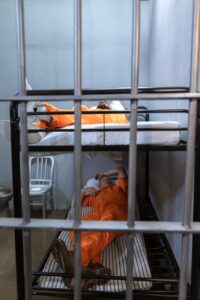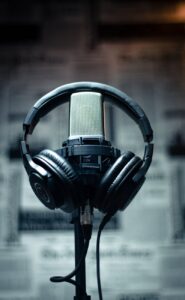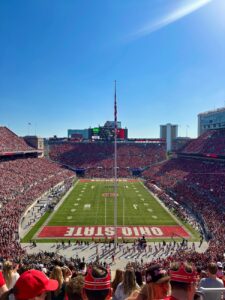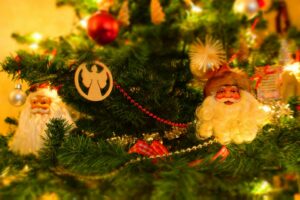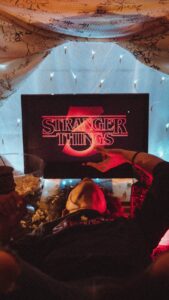New chief preparator at USU Eastern’s museum
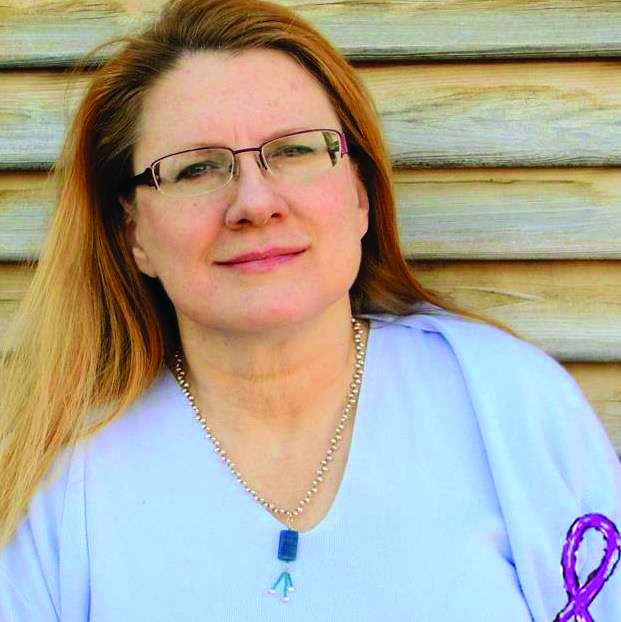
This archived article was written by:
An emphasis on vertebrate paleontology and extensive fieldwork in seven states merely touches the surface of Carrie Herbel’s resume. She began work as chief preparator at USU Eastern’s Prehistoric Museum in November and immediately began work on assembling the Stegosaurus skeleton that sat for many years as a collection of bones.
Growing up in Nebraska, Herbel earned a geology degree from the University of Nebraska-Lincoln and completed post-graduate courses at the University of Pennsylvania and Bryn Mawr College. She returned to U of N where she earned her Master of Science degree in geology.
Herbel continued her studies at the Conservation of Geological Materials International Projects of London, Advanced Geological Conservation Methods International Academic Projects of London, Leadership Rapid City and post-graduate courses at South Dakota School of Mines and Technology.
She worked at the South Dakota School of Mines and Technology Museum of Geology and the University of Nebraska State Museum. She also worked at the National Parks Service in Lincoln, Neb.
While supervising over 100 employees each year at the Museum of Geology, she is most proud of obtaining over $1 million in grant money during her last 10 years at the museum.
Authoring 29 publications, she anticipates that her textbook, “Museum Methods in Vertebrate Paleontology – From the Laboratory, to Collections and Research” will be published in 2015.
One of most well known attributes about the USU Eastern Museum is the amount of complete dinosaur skeletons it houses. Research in the past decades determined that the large dinosaurs at the museum were highly mobile creatures and its employees started redesigning the exhibits to portray this concept. This is where Herbel’s experience of preparing fossils will be used.
She has extensive experience in designing and producing exhibits from making molds, casts, designs and installations. She taught a class for undergraduate and graduate students entitled “Museum Conservation and Exhibit Design” with many of her former students now working in museums throughout the United States. Her major exhibit efforts include: The Mesozoic Gallery at the U of Nebraska State Museum; portions of exhibits at the Visitors Centers of Badlands National Park and Agate Fossil Beds National Monument; and a few specimens at Ashfall Fossil Beds Nebraska State Park.
The remoteness of the vast area of Southeastern Utah does not intimidate her as she admits to being competent in remote field areas, having conducted fieldwork in extreme conditions. She was a lead member of a salvage operation for two and a half months where she camped out near a remote Barstovian site near Valentine, Neb., with no potable water.
Her personal research interests are taphonomy of vertebrate fossil localities and ages, Cenozoic Bistratigraphy, improving field and lab methods and techniques, education in many environments, how bone changes over time and becomes fossilized (diagensis), and, finally, conservation of specimens from field to lab to collections to exhibits.
Herbel arrived at USU Eastern when she re-entered the job market after the passing of her mother. “I was very lucky to be interviewed by several institutions. I wanted a challenge and to live in a place where I could really put my roots down. This area is incredible in its history, archaeology and paleontology. Plus the geology is outstanding to someone like me who enjoys studying rocks and taking lots of pictures of our world. The history of the Prehistoric Museum is well known and I knew it was a place where I could make a difference in many different ways. It is definitely an exciting change for me.
“My expertise lies in fossil mammals, something this museum has only a few specimens within the collections. Even though dinosaurs are the big cool fossils, these ancient mammals are also a part of the surrounding area and can tell us a lot of prehistoric conditions and environments.
“I hope I can add to this facet of the museum, in addition to aid in fleshing out the incredible richness of Utah’s dinosaurs. All these fossils need someone like me who has the goal of recovering, stabilizing, and preserving these specimens now and for well into the future. That is my own motto – do no harm to fossil specimens and protect them for the next 100 years, if not more.”
Short term goals for Herbel is learning how to put together a Stegosaurus, followed by a Camarasaurus and then a Diploducus. Ken Carpenter Ph.D., director of the museum, has a wealth of experience mounting dinosaurs in exhibits, while her experience has been with small skeletons of fossil mammals. “I want to learn from him and become as capable as possible of bringing these bones to life within an exhibit. A definite challenge that I am up for.”
“Carrie brings a lot of important skills and experiences that make her a valuable asset,” Carpenter said. “We are very lucky to have her.” Carrie chose the Prehistoric Museum over another job opportunity because of the great opportunities at the museum. In addition, being a photography buff, she’ll have a lot of internationally famous Southern Utah landscape available to her.
In discussing her long term goals, she plans to expand outreach, education and encourage people to participate with her in the field, the lab and within the museum exhibits focusing on all aspects of vertebrate paleontology. “To share my knowledge with volunteers and students of all ages so my work will continue long after I am gone. To be someone that can make a difference within science education and to promote science for young people, especially girls/women, to get excited and involved.”
Living in this incredible area – the geological features takes her breath away, every day during her drive to and from work. She adds, “To be able to look out my back door at home and see the looming Book Cliffs is stunning. I keep telling myself ‘I really live here.’ To know that I moved to an area rich in so much history, archaeology and vertebrate paleontology, makes me feel blessed in many ways. The Earth, its formation and the life that exists (and existed) here is fascinating. I am always in awe and always learning.”
Some of the landmarks she wants to visit in Utah is all of them. “I ask myself, what don’t you want to visit? I want to see everything through all the seasons…A beautiful place to live.”
